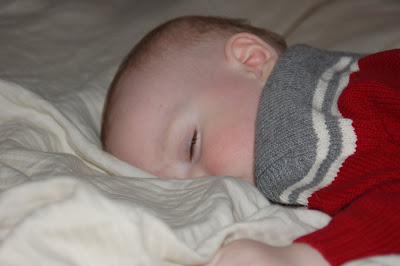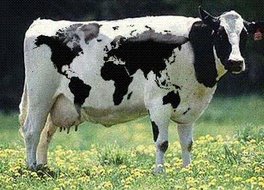Well, the definitions say circumcision doesn't count. A vaccine is something that stimulates the immune system against the disease in question. Unless circumcision exposes the man to HIV antigens? I'm thinking not.
But what is the point of a vaccine? In epidemiologic terms, it is to a) prevent infection, b) prevent or decrease transmission, or c) prevent or decrease symptoms of the disease. So does circumcision count? I'm not sure.
Yes, we have good evidence that circumcised men are less likely to become infected. The bias involved, however, is overwhelming -- the differences in most of these studies that led to one man being circumcised rather than another stem from culture and religion. Could either of those factors affect, say, sexual behavior? Probably. Do we have a plausible biological reason for HIV preferring uncircumcised men? Not really, in my opinion, although there's a lot of hot air on the subject. We have a link. That's all we can really say.
So what do we do with a link, with a cultural action that may be protective? In my opinion, ignore it and push cultural acceptance of condoms and abstinence. We know they work and we know why. Until a real vaccine comes along.
Monday, January 15, 2007
Sunday, January 14, 2007
Book Review: The American Plague
Fantastic first part, describing how the Memphis yellow fever epidemic of 1878 could have happened. Background, flashbacks, gripping heat-of-the-moment storytelling: it really makes you feel what it must have been like to be there. Strangely enough, all the reviews on the back refer to that section . . .
The rest of the book, outlining the contribution of many, including Walter Reed, to understanding the way yellow fever worked and how to stop it, was good. Not spectacular, but good. Some of the human drama, the stories behind the human subjects in the Havana trials, are really quite stirring. For the most part, though, it's just solid storytelling. It's almost, at times, as if the author got a little bored, herself, and couldn't really be bothered to keep the energy up. With the lessons that could be taught about the spread of yellow fever in modern Texas, I don't know why the end wasn't a bit more . . harrowing? . . frightening? . . interesting?
You should read this book for the story of what happened to Memphis. The rest is good background in the subsequent history of yellow fever, but the book is worth it mostly for the first section.
The rest of the book, outlining the contribution of many, including Walter Reed, to understanding the way yellow fever worked and how to stop it, was good. Not spectacular, but good. Some of the human drama, the stories behind the human subjects in the Havana trials, are really quite stirring. For the most part, though, it's just solid storytelling. It's almost, at times, as if the author got a little bored, herself, and couldn't really be bothered to keep the energy up. With the lessons that could be taught about the spread of yellow fever in modern Texas, I don't know why the end wasn't a bit more . . harrowing? . . frightening? . . interesting?
You should read this book for the story of what happened to Memphis. The rest is good background in the subsequent history of yellow fever, but the book is worth it mostly for the first section.
Just to brag
I want to brag: I have the cutest nephew/godson in the world.

Yes, isn't he adorable? And he likes to pose:
Which, given that I have a new camera and had it with me on my last visit, is very convenient.
 Would you believe I took that picture in a completely unlit room? I'll have lots of fun pictures to post when I get back from Uganda.
Would you believe I took that picture in a completely unlit room? I'll have lots of fun pictures to post when I get back from Uganda.
Oh, and since I did take other pictures, here's a glimpse of WNY in December:


Isn't that depressingly non-white? Oh well, it's snowing here today!

Yes, isn't he adorable? And he likes to pose:

Which, given that I have a new camera and had it with me on my last visit, is very convenient.
 Would you believe I took that picture in a completely unlit room? I'll have lots of fun pictures to post when I get back from Uganda.
Would you believe I took that picture in a completely unlit room? I'll have lots of fun pictures to post when I get back from Uganda.Oh, and since I did take other pictures, here's a glimpse of WNY in December:


Isn't that depressingly non-white? Oh well, it's snowing here today!
Cruelty?
I don't debate the premise of this article, that vegan clothing is animal cruelty-free. I would wonder if it is human cruelty-free (are all the links on the chain paid living wages?).
No, my problem is more with the idea that non-vegan clothing/food is cruel. It can be, of course. But it doesn't have to be -- and I don't like the implication that it does.
No, my problem is more with the idea that non-vegan clothing/food is cruel. It can be, of course. But it doesn't have to be -- and I don't like the implication that it does.
Tuesday, January 09, 2007
Bias?!?! No!
Yes, that's right: nutrition studies funded by animal food companies are biased.
I'll wait for the shock to die down.
We all know (or we should) that companies funding research into their product will sit on any negative results. Thus, there's a simple publication bias towards positive results (which is there for any study, really, but more so when the funding is private and financially interested). Be aware. Any article will (or, again, should) mention the source of funding. Look at it and understand what it might mean to the results.
I'll wait for the shock to die down.
We all know (or we should) that companies funding research into their product will sit on any negative results. Thus, there's a simple publication bias towards positive results (which is there for any study, really, but more so when the funding is private and financially interested). Be aware. Any article will (or, again, should) mention the source of funding. Look at it and understand what it might mean to the results.
Friday, January 05, 2007
So far, so good
Yes, we have a new director at the WHO. A woman, a Chinese woman! And, of course, one of her first priorities is women.
Why? Because women do the best, in most situations, at getting health care to children who need it. Because educating a woman on nutrition affects her entire family. Because women are teachers and nurses and farmers. Good for Dr. Chan!
Second priority is Africa: it's hip, it's got lots of important diseases, and it has the biggest opportunity to show improvement. Of course, it also has the biggest opportunity to fail completely. Good luck, God speed.
At the end of her priorities is bird flu. Why? Because it's not as important as a lot of other things that are going on. But it's the controversy over Dr. Chan; she's Chinese, from the government that hid its bird flu problem (badly). Is she going to favor her non-transparent home government? We'll have to wait and see.
Now, though, she just needs to start the job. Alright, time to show your stuff. Get to work.
Why? Because women do the best, in most situations, at getting health care to children who need it. Because educating a woman on nutrition affects her entire family. Because women are teachers and nurses and farmers. Good for Dr. Chan!
Second priority is Africa: it's hip, it's got lots of important diseases, and it has the biggest opportunity to show improvement. Of course, it also has the biggest opportunity to fail completely. Good luck, God speed.
At the end of her priorities is bird flu. Why? Because it's not as important as a lot of other things that are going on. But it's the controversy over Dr. Chan; she's Chinese, from the government that hid its bird flu problem (badly). Is she going to favor her non-transparent home government? We'll have to wait and see.
Now, though, she just needs to start the job. Alright, time to show your stuff. Get to work.
Turns out they're not actually a good idea!
Story posted today:
Sad, but true.
Study: Antibiotic use in poultry hurts bottom lineYes, one of the best uses of epidemiology -- figuring out that something we don't want to happen isn't a good idea economically. Listen, people: use economics to back up your moral views. Otherwise, people just won't listen.
By Alicia Karapetian on 1/4/2007 for Meatingplace.com
A new study conducted by researchers at Johns Hopkins University contends that using antibiotics in poultry for growth-promoting purposes actually reduces the net value of each broiler carcass.
According to the study's results, growth-promoting antibiotics decrease the value of each carcass by almost one cent.
The research, which appears in this month's issue of the journal Public Health Reports, claims to be the first economic analysis of the practice in poultry production. The Johns Hopkins researchers used data previously published by Perdue Farms, which looked at 7 million broilers produced by the No. 4 processor.
However, a National Chicken Council spokesman told Meatingplace that the study's results lacked significance because industry use of growth-promoting antibiotics has declined in recent years, and the primary use of antibiotics is for animal health.
Jay Graham, one of the authors of the study, told Meatingplace that his research showed that the companies that do not use growth-promoting antibiotics only represent 38 percent of American poultry production. Graham also highlighted international implications of the study. "This [study] is important because poultry production is growing rapidly [overseas], mostly in developing countries," he said. "There is a belief that using [growth-promoting antibiotics] in feed is necessary from an economic perspective."
Organizations such as Keeping Antibiotics Working oppose the use of antibiotics in animal feed due to fears of potential human resistance to drugs deriving from the same substances. NCC maintains there are no proven cases of human health problems resulting from antibiotic use in the U.S. poultry industry.
Graham, however, contends that antibiotic use in animal feed does affect drug resistance levels in humans. "There are studies that indicate some human drug resistant infections most likely originate from agricultural use of antibiotics," he said.
Sad, but true.
Subscribe to:
Comments (Atom)
